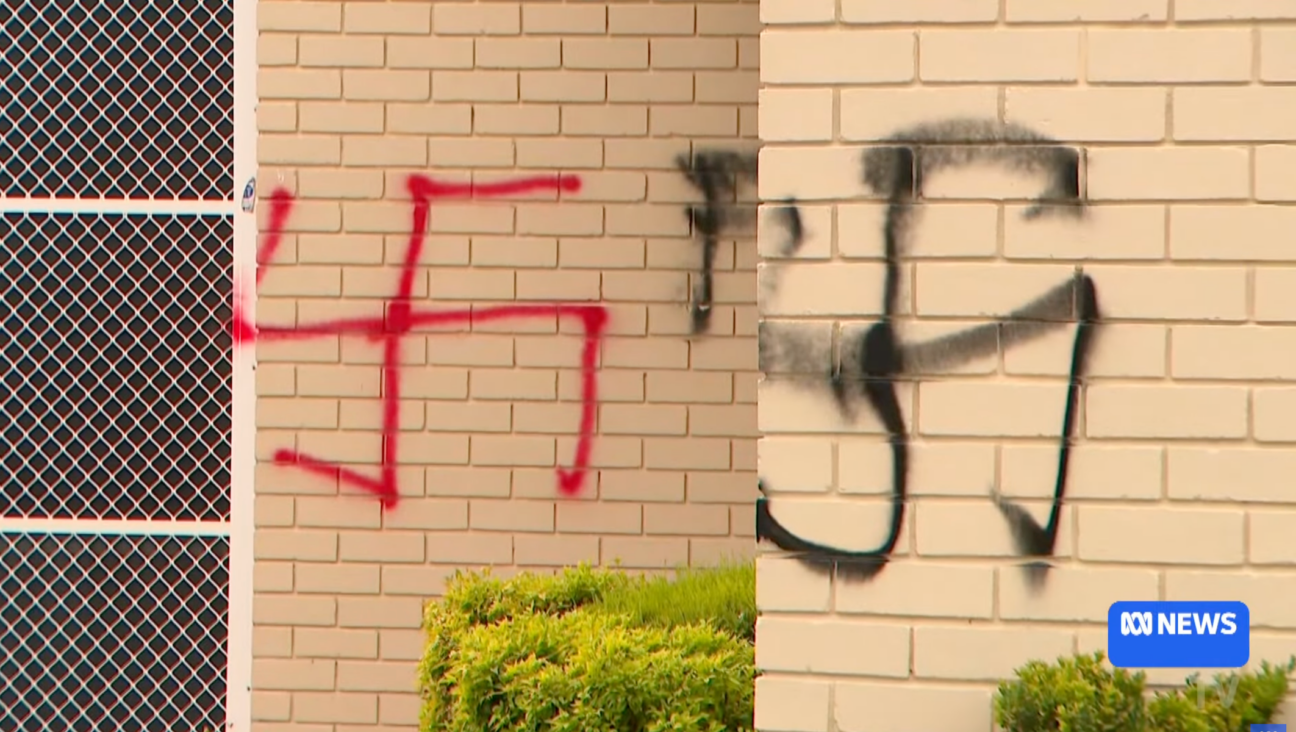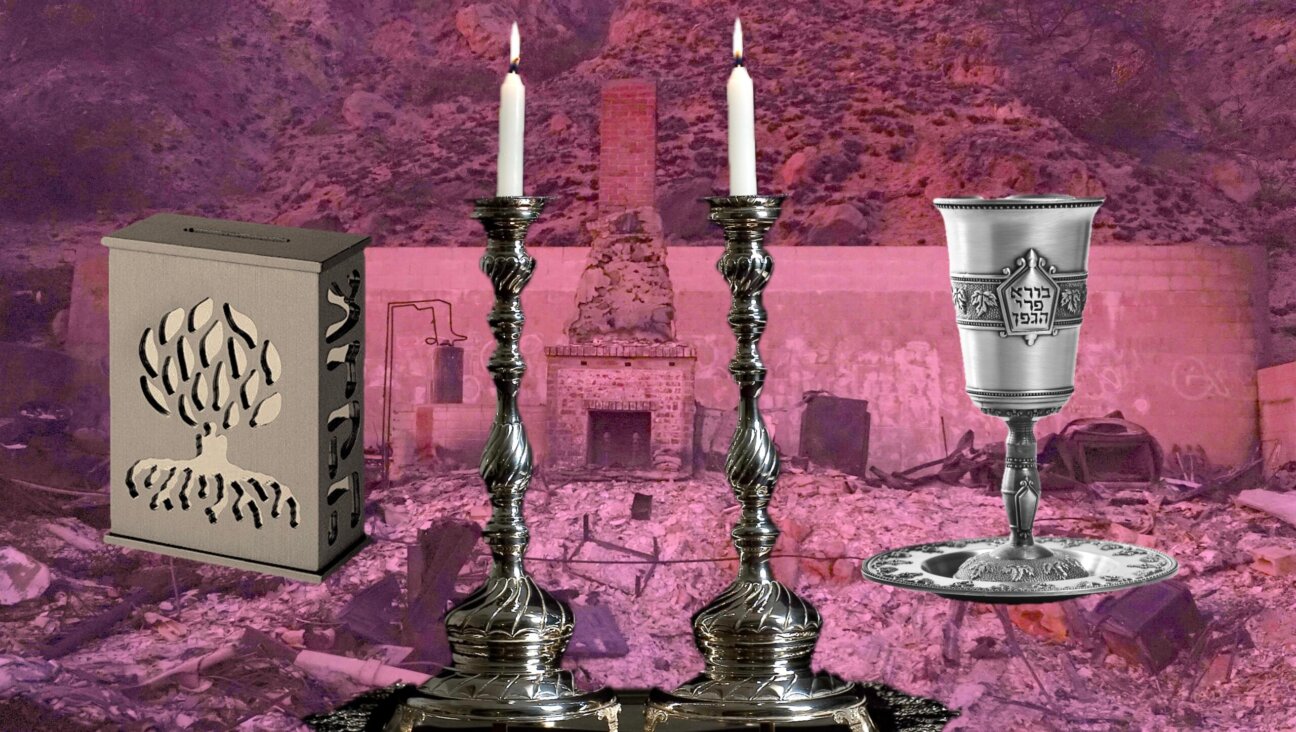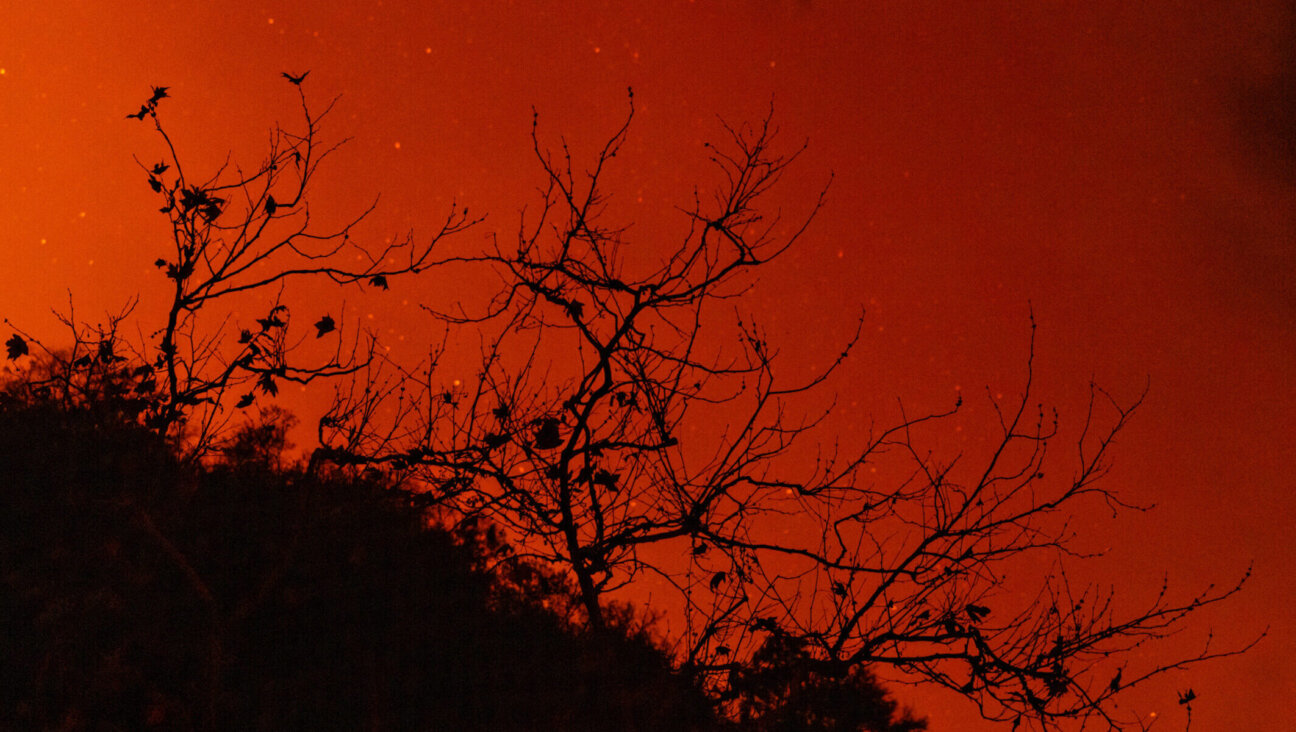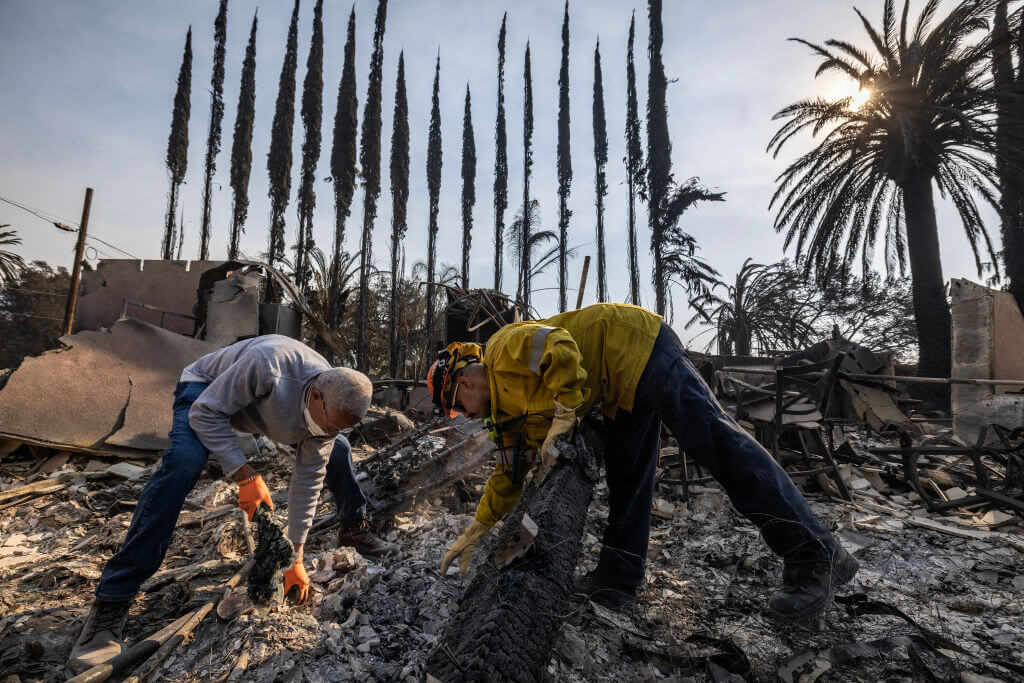Pen in Hand, Political Cartoonist Fights for ‘Freedom’
Steve Brodner really likes Oliver North.
Anyone familiar with Brodner’s political cartoons might find this difficult to believe. Brodner is a fierce, uncompromising liberal and his new book, “Freedom Fries” — a collection of his drawings — savages the American right. “My politics are much closer to Dennis Kucinich,” Brodner said. But when he met North during the former colonel’s unsuccessful run for Senate, he came away liking him.
“North is a wonderful guy,” Brodner told the Forward. “Funny, easygoing, gentle.”
It was, perhaps, North’s amiability that makes the drawings of him in “Freedom Fries” seem much tamer than the portraits of other politicians.
North should consider himself extremely lucky. Brodner has developed a distinctive style throughout the years, and it is rarely kind. His pen shoots acid instead of ink, and few people are spared.
Many people who have never heard of Brodner have seen his work nonetheless; Brodner’s drawings have appeared in The New Yorker, the Village Voice and The Nation. He designed the poster for Warren Beatty’s movie “Bulworth” and the cover for Jack Newfield’s biting biography of Rudolph Giuliani, “The Full Rudy.”
North is not the only Republican whom Brodner has liked throughout the years. He was very impressed with Bob Dole when he drew him for the Washington Post; Jesse Helms was cordial and gentlemanly when they met, and even George W. Bush — whose politics arouse Brodner’s bottomless contempt — was friendly and likable when Brodner drew him in Texas years ago.
But in Brodner’s drawing of Bush, the muscles on the president’s face are folded together tightly, and his brown eyes are slightly crossed. His unflattering caricatures of Bill Clinton show an enormous jaw fixed atop a tiny head. His drawings of Ronald Reagan portray a mop of black, shiny hair and a pair of tiny eyes over a hollow grin.
Pope John Paul II gets the treatment in “Freedom Fries”: He is portrayed in a bloody apron with wire hangers hanging out. (Brodner is pro-choice.) Rush Limbaugh — in a picture titled “Rush Tush” — is shown with a head looking like a certain part of the anatomy. (The drawing — created for the left-wing journal Mother Jones — never ran.) In another drawing, John Ashcroft coolly blows smoke off the barrel of a pistol, while a bullet-rippled copy of the Constitution hangs behind him.
It is almost difficult to believe that Brodner, who is so disarmingly friendly, could be so venomous in his art. “I look gentle,” Brodner admitted, “like I’m your friend.” It explains a little of how he has managed to get so many right-wingers to sit with him for a portrait.
Brodner sports a beard and has a fringe of reddish-brown hair. He works in a small apartment in New York’s Washington Heights, adorned with his drawings and with his friends’ drawings. As he labors over his drawing board, his only companion is his dog. (He lives around the corner from his studio with his wife and teenage daughter.)
When the Forward came to visit him at his studio, Brodner was putting the finishing touches on his weekly drawing for Sports Illustrated, called “Scorecard.”
The subject that week — as it had been for months — was Kobe Bryant, a topic for which Brodner has no real love. “It’s so boring,”
Perhaps more to vent his frustration than anything else, the drawing that he scans into his computer shows Bryant squeezed uncomfortably underneath an enormous gray microscope. Politics aren’t the only topic to which Brodner can apply his stinging sensibilities.
A Brooklyn, N.Y., native, Brodner, age 49, was born in Crown Heights, but moved to Flatbush with his mother and sister when he was still a child. (His father left home when Brodner was 10.) He attended a yeshiva in Sheepshead Bay because it was the only school that would allow him and his sister — two of the yeshiva’s significant secular crowd — to start at 7:30 a.m. with minyan and stay until his mother came to pick them up after work.
Brodner’s mingling of art and politics came when he was still a kid. He drew his first political cartoon when he was about 8 or 9, shortly after President Kennedy was assassinated. “The weekend of the funeral, it was on TV and [the newscasters] kept saying, ‘The late president this,’ and ‘The late president that.’ So I thought, ‘Oh… he’s late.’ So I did a drawing of him looking at his watch.”
Brodner transferred to Tilden High School in Flatbush, where he began drawing for the school newspaper. It was in high school that he met his first politician, or at least a politician-in-training. “Al Sharpton was in my class at Tilden,” Brodner said, recalling that Sharpton “led a revolt” against the school’s administration.
“My opinion of him was the opinion of all [the other] white Jewish kids: that he was a shameless opportunist,” Brodner said. “It was only during the 1977 campaign for mayor that I came to see he was more than that. Sharpton represented something to people, something nobody else was doing. Sharpton was more than a clown.”
During the 1970s, Brodner went to Cooper Union, where he failed drawing and nearly flunked out of school. His drawing teacher disliked him so much that she went around the school asking Brodner’s other teachers to fail him so that he could get kicked out. (“The feeling was,” Brodner explained, “if you failed drawing you had no business being at Cooper Union.”)
However, Brodner got the better of his teacher. While he was still a student, 19-year-old Brodner entered a national cartoon contest, in which he competed with the likes of Charles Addams and Gary Trudeau. He won first prize.
Has Brodner ever taken pen to paper and made a cartoon of the subject? “No,” Brodner told the Forward. “It was so handily publicized I didn’t need to… This teacher never looked at me again.”
A message from our Publisher & CEO Rachel Fishman Feddersen

I hope you appreciated this article. Before you go, I’d like to ask you to please support the Forward’s award-winning, nonprofit journalism so that we can be prepared for whatever news 2025 brings.
At a time when other newsrooms are closing or cutting back, the Forward has removed its paywall and invested additional resources to report on the ground from Israel and around the U.S. on the impact of the war, rising antisemitism and polarized discourse.
Readers like you make it all possible. Support our work by becoming a Forward Member and connect with our journalism and your community.
— Rachel Fishman Feddersen, Publisher and CEO























